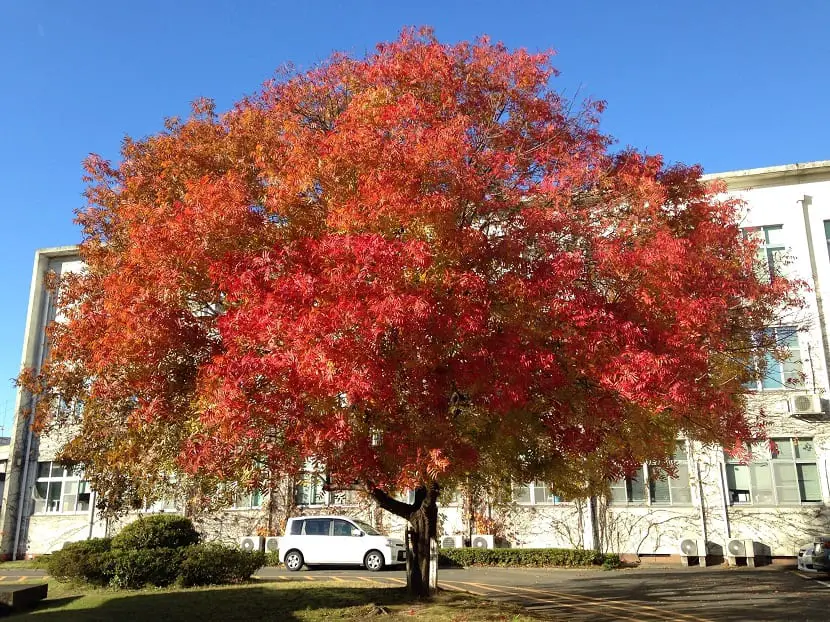
The Pistacia chinensis it is a species that belongs to the family Pistaciaceae and is commonly known as Chinese pistachio. This is a robust tree with deep roots that make it an ideal species for patios and sidewalks, being prized for its beautiful autumn tones and pleasant shade.
Characteristics of the Pistacia chinensis

It is usually used as an ornamental plant in urban areas and as a shade tree in gardens. In Asia, the oil extracted from its seeds is used as biofuel.
This attractive tree in the fall displays green foliage that turns a spectacular orange or reddish color. This excellent species for shade can reach between 9 and 18 meters in height. Its flowers are individually male or female, however only one sex can be found in each plant, so if it is required to obtain its seeds, plants of both sexes must be planted.
It is deciduous, has 10 to 16 pinnae and its leaves on contact are full of a great aroma. Although his name recalls pistachiosIts berries are not suitable for human consumption, although birds do consume it with great enthusiasm.
The female species blooms during the month of April, its green flowers transform into groups of reddish berries during the fall, and then take on a bluish color during the winter. Its bark has a greyish brown color.
This plant has the peculiarity that its berries fall very easily and form a rather slippery carpetits growth is moderate and has a life that can be classified as long and in relation to soils, it is a tree that tolerates droughts and adapts to almost all soils. The PH is the same, since it can be acidic, neutral or basic.
Planting and care
The Pistacia chinensis It prefers sunny locations, so you should place it in an area where it has about 6 hours of direct sunlight. In relation to the ground, it just needs good drainage. So remember to choose a sunny place, with fertile soil and deep enough, where its roots can develop without any obstacle and that is away from nearby structures, at least 5 meters away.
Once you have chosen the place for your planting, open a hole with a depth equivalent to 3 or 5 times wider than the root ball of the plant. Try to plant it in the center of the hole, spreading the roots evenly. Then proceed to cover the hole without modifying itas this is not necessary. You must water well and spread a mulch from 5 to 9 centimeters on the periphery of the stem, but removed from the trunk to avoid the attack of fungi and other types of parasites.
Diseases and pests
Although the Chinese pistachio plant is very resistant to diseases and pestsare sensitive to wilting by verticillium. For this reason, avoid sowing it in an area that has been affected by previous contamination. Once you have completed your planting, apply irrigation at least twice a week until acclimatized.
Regarding the application of fertilizers, it is recommended to use those that contain nitrogen in trees that do not exceed 5 years. Do this during the spring and fall. If you notice that their growth barely reaches 60 or 90 centimeters per year, use a fertilizer that contains a superphosphate supplement.
Pruning

To preserve its characteristic umbrella shape, you can prune the tree at the beginning of the year, either in January or February. When they reach a height of approximately two meters, prune the tops and pay attention to when its branches emerge, choose one as a trunk, another as a branch and proceed to prune the others.
Now and if the tree has grown a meter more, prune two feet above previous cuts to encourage better branching. This procedure should be repeated until the plants show good symmetry with an open cup. Make sure to collect leaves and berries that have fallen in the vicinity to avoid unexpected seedlings.

